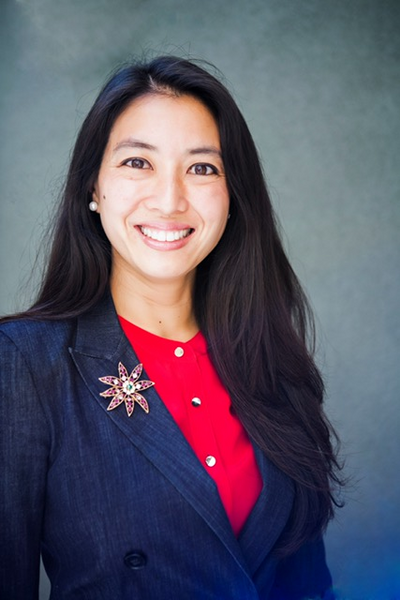Dear Friends and Allies,
Concerns for children’s mental health are on the top of our state policymakers’ agendas, and CCT has recently provided data, research and testimony to find solutions. In just the last few weeks, the Little Hoover Commission published the results of an extensive series of hearings: COVID-19 and Children’s Mental Health: Addressing the Impact and on August 18 the California Joint Senate Hearing on Education and the Pandemic Response, heard from panels of experts to formulate responses to address the trauma our students have endured and continue to face as they return to school.
In looking for solutions we turn to Aimee Eng, CCT’s Director of Strategy and Education Partnerships, and multi-term School Board Member for Oakland Unified School District. Aimee brings a frontline perspective of the challenges faced by children, youth, families and schools, and is at the center of California’s movement to reimagine schools as places for healing and thriving.
Education Partnerships, and multi-term School Board Member for Oakland Unified School District. Aimee brings a frontline perspective of the challenges faced by children, youth, families and schools, and is at the center of California’s movement to reimagine schools as places for healing and thriving.
Question: As a School Board Member in Oakland (and previous two-term President), you have been on the frontline with school leaders, students and parents to figure out how to meet the unprecedented challenges of the twin pandemic of COVID and racial reckoning. What have you learned that will shape your work going forward? |
My list of learnings is long, but I think two things encompass most of what I have experienced in working with schools during these twin pandemics. Number one, the issues elevated over the past year-and-a-half existed before the spring of 2020; and number two, schools have a central role to play in responding to these issues.
I started my role with CCT one week before the pandemic shut down schools. Even as a multi-year OUSD School Board member, I did not understand the full extent of the youth mental health crisis. Then COVID hit and everyone was talking about mental health and wellbeing as we pivoted to online learning. Our students were hurting before the pandemics, but COVID removed the stigma and gave us a common language to talk about it, and start finding solutions.
Similarly, long before the summer of George Floyd’s murder, Oakland schools were focused on racial equity, but it didn’t fully acknowledge or address the deep systemic and structural harm inflicted on historically marginalized students and families— BIPOC, LGBTQ, English Learner, immigrant, refugee, foster care, systems impacted youth, and unhoused students, and students with disabilities. We’ve had to dig deeper, for example, shifting from school police to cultural ambassadors, continuing to grow our restorative justice program, and providing new training across the district for administrators, teachers, and classified staff.
Second, in addressing these pandemics, it's become even more evident that schools play a central and irreplaceable role in our communities. Intellectually, I knew this. But the twin pandemics made it visceral. We started distributing food, technology, and personal hygiene items. When schools shut down we felt and heard students’ pain from the loss of social connections—friends, adult allies, coaches, teachers. Many of the things that keep students and families connected, strong and resilient, are actually naturally built into the structure of schools.
Question: Last spring, there was a lot of talk about a Restorative Restart to school to prepare students for in-person learning this Fall. What changes have you seen to move in that direction as students are returning to school after over a year of isolation and trauma, and with the delta variant now adding even more challenges? |
Unfortunately, fear, concern and anxiety around the delta variant has shifted focus away from Restorative Restart conversations as cases rise and are prevalent in many schools across the state and country. However, I do believe we have a unique opportunity to lead recovery efforts in schools, especially with California’s unprecedented investment in children, youth, and families.
We are already seeing school leadership step forward with unique partnerships to support mental health and wellbeing as students return to school amongst heightened stress and anxiety. One great example is Sacramento City Unified School District (SCUSD) where through their PRO Youth and Families program nearly $2 million in new funding has been secured for youth mental health & wellness programs across three high schools and with a focus on outreach and support to youth of color and LGBTQ youth. The goal is to create healing-centered, trauma-sensitive schools that help students feel safe by fostering positive peer-to-peer relationships. This will be achieved through a combination of technical assistance, training coordination, data collection tools, peer-to-peer and youth advocacy programs.
Question: With your guidance and expertise CCT has, in a very short time, played an instrumental role to reimagine schools as places of healing and wellness for students. This helped pave the way for a $4 billion investment in the Youth Behavioral Health Initiative, as well as $2.8 billion in new funding for community schools. What are some of the structural changes essential to turn these one-time investments into sustainable change versus a short-term response to the pandemic? |
These initiatives are all aligned for “whole child support” that recognizes children and young people only learn when they are physically, mentally and socially safe and strong.
From our perspective, the clearest path to success is for schools to be strategic in leveraging the one-time funds by focusing on state dollars that can be matched, and using them to create infrastructure that sets schools on a path for sustained change. This requires a new web of partnerships that seamlessly provides support in schools, and also extends those supports into the communities where students live. In August 2020, CCT and Breaking Barriers launched the Practical Guide for Social, Emotional and Mental Health in Schools to help school districts and education leaders navigate partnerships and claim millions of dollars of Medicaid funding to increase supports for the social and emotional needs of students. With $5 million in the 2021-22 state budget to support local education agencies (LEAs) in effectively using Medi-Cal, we continue to work with both CDE and DHCS to provide support to districts to take action with the Guide.
I can speak even more specifically to community schools since Oakland Unified was one of the first school districts in the country to strive to become a full-service community school district over a decade ago to meet not just the academic needs of students, but also mental health and wellness, and social emotional needs. Effective community schools must start with asking students and family members what they want to see in their school, and getting buy-in and support from the school community. As detailed in the Healing-Centered Community Schools brief we did in partnership with PACE, Californians for Justice and Advancement Project California, community schools are about transforming schools into a foundation of trusting relationships among teachers, students, caregivers, and community partners to create the conditions for mental health and wellness, and social emotional wellbeing for all members of the school community, especially students. This transformation is only possible because community schools prioritize engaging students and families who are directly impacted by the racism and stigma that undermine wellbeing and learning.
The $2.8 billion of additional funds through the Community School Partnership Grant Program is a state funded investment to grow this model of restorative education across California. These state funds can also be strategically used for student mental and behavioral health programs, within the community schools model, that draw down Medi-Cal matching dollars to extend the positive impact of the investment.
Question: What can schools, communities and families do to help ensure that this historical investment leads to real change for California’s most vulnerable students? |
I’m going to circle back to the first question and call out one other thing that has been clear to me during my time on the School Board, and especially during the past year of challenges—youth and family voice matters A LOT. The leadership we have witnessed in youth and families advocating for racially just healing centered community schools has been incredible. And it has made a big difference.
The state’s new and significant investment in children, youth and schools makes it even more important that students, families and school leaders work together to ensure districts are taking advantage of opportunities to spend dollars strategically in support of students' social emotional wellbeing, while also building an infrastructure with fiscal sustainability in mind. This means becoming more knowledgeable about how districts track and report expenditures, and requesting greater levels of transparency where needed.
CCT works with some great advocacy partners—PICO California Education for Liberation, Californians for Justice, and The Children’s Partnership—are a few that help elevate the voices of families and students to ensure policies and funding have the intended benefit in schools. As school district leaders, we need students and families to keep us accountable to centering their needs.
NEWLY RELEASED ISSUE BRIEF
In our new brief, Youth Mental Health Crisis Lines: Critical Players in a Complex Landscape of Services, we examine national and California youth crisis lines and their role in providing services prior to and during the pandemic.
This brief helps explain the complicated landscape of crisis lines that continues to shift with the recent announcement that the Department of Health Care Services (DHCS) will invest $20 million in the state’s network of emergency call centers to support the launch of a new 988 hotline, an alternative to 911 for people seeking help during a mental health crisis. Currently, 13 call centers in California, both public and private, take calls that come from the National Suicide Prevention Hotline. Those centers will start receiving calls from 988 when the service starts in July 2022.


Comments (0)